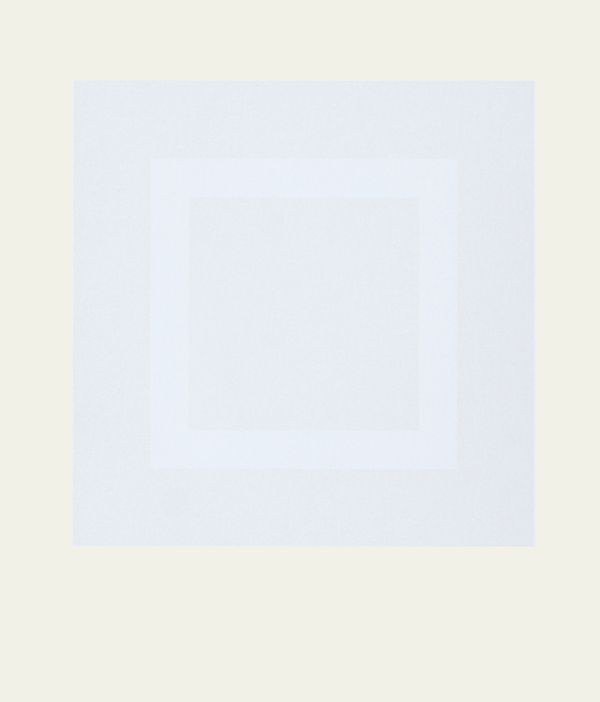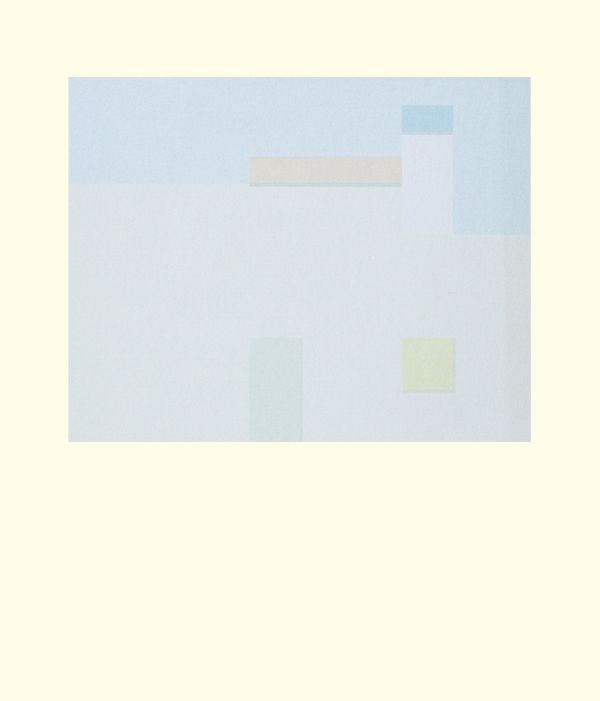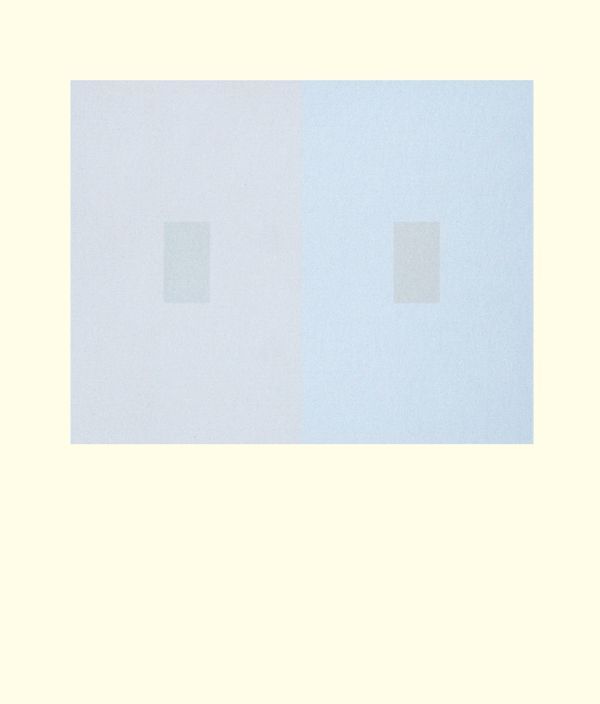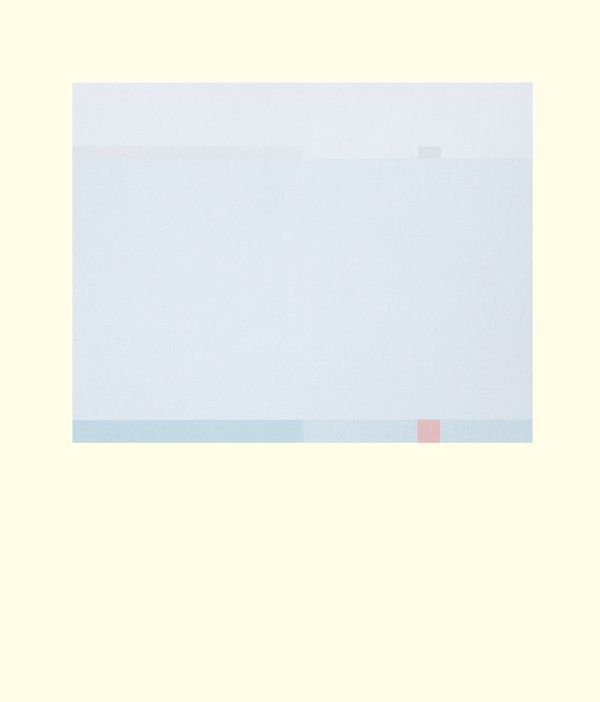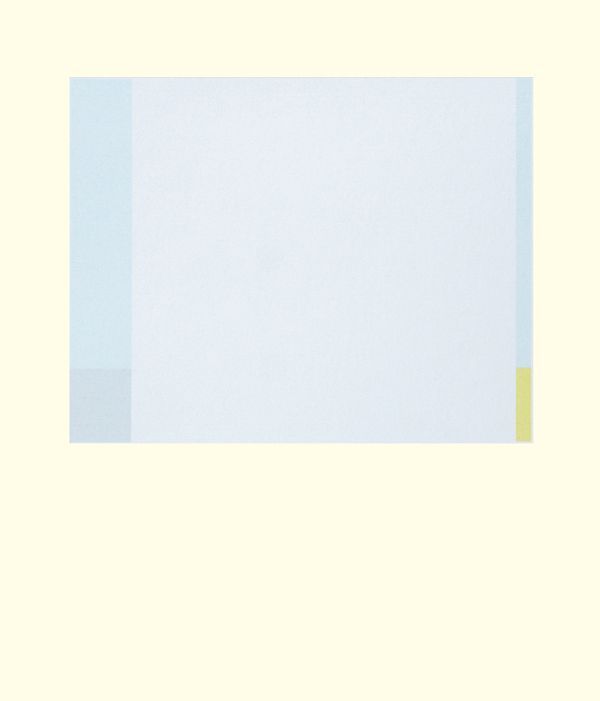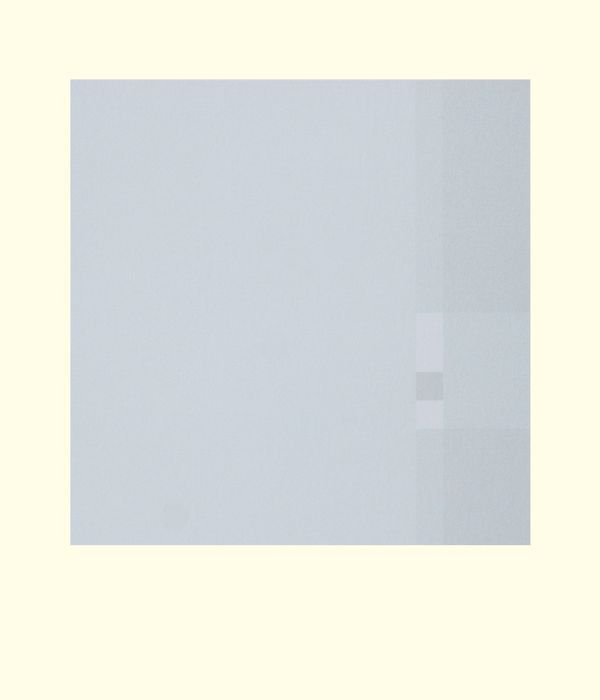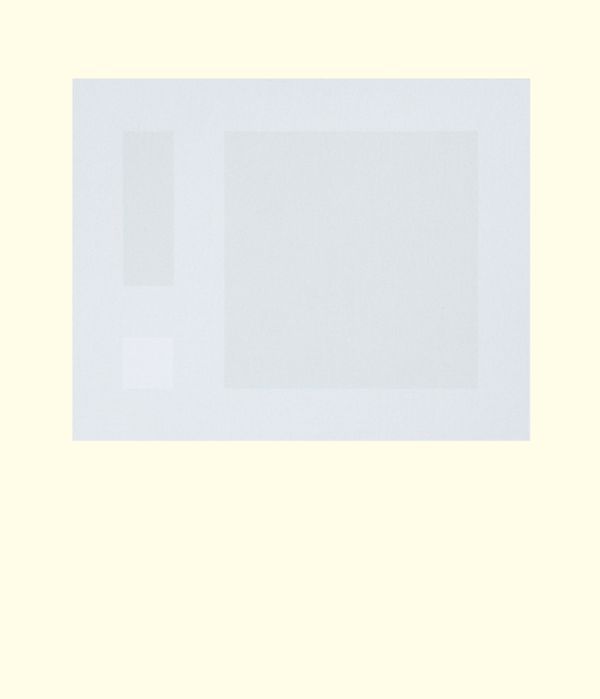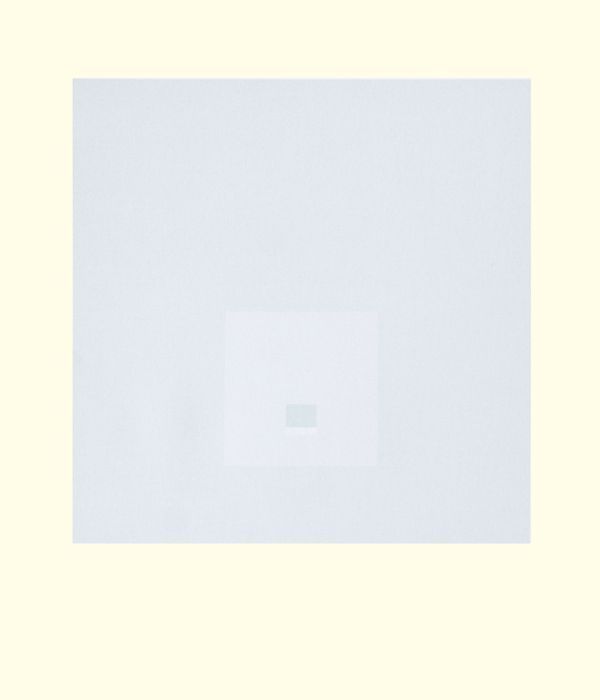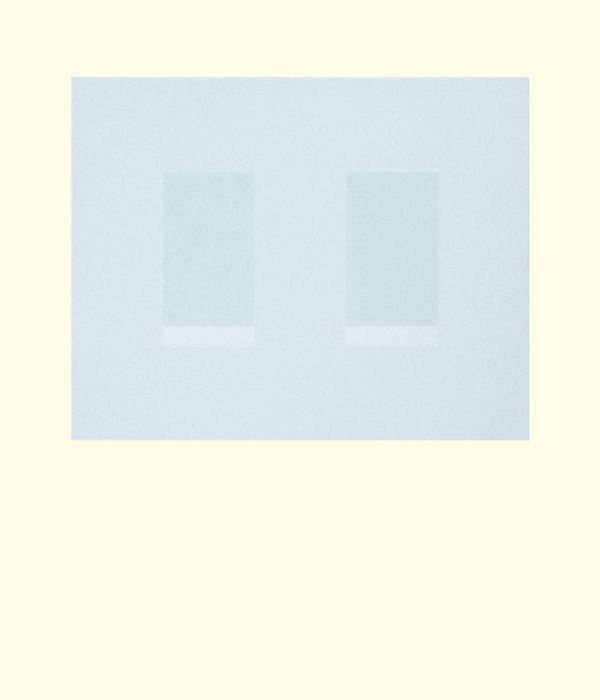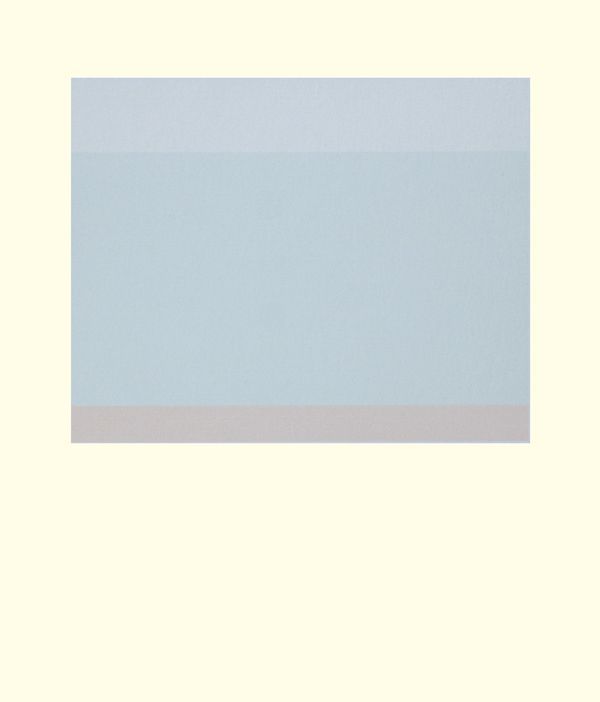Box with 18 screenprints on handmade paper after water colours from 1958 - 66
Dimensions: 40.4 x 35.2 cm each
Signature, inscriptions, markings: each signed and numbered verso at lower middle
Copy Number: 95/108
Printer: H. P. Bayer, Hofhaus Presse, Düsseldorf
Publisher: Hofhaus Presse, Düsseldorf
Accession Number: 1002322.1–18
"I want to arrive at a painting of light alone, I want to paint 'silence'."1
A silence such as might have prevailed in the icy silence of winter in his home town of Vacciago on Lago d'Orta. Antonio Calderara's art, also and perhaps even more so the late, non-representational painting, always transports as a basis "the deep emotional experience of his homeland, the landscape and the light around Lake Orta in Piedmont."2 The delicate pastel tones that determine his compositions demand silent attention. As if illuminated from within, the paintings transmit a sublimated light to the viewer. In places, geometric shapes emerge from the light-dark contrasts of the colors, with an almost spatial effect. "Space Color Light" is the title of the series, and the portfolio text formulates the relationship of these three components:
SPACE COLOR LIGHT / LIGHT THAT DOES NOT ILLUMINATE, LIGHT THAT IS THE SPACE, THE COLOR, THE STRUCTURE / SILENCE / COLOR THAT IS LOST IN THE LIGHT, SPACE THAT IS THE MEASURE OF LIGHT; / STRUCTURE THAT CONSTRUCTS ITSELF IN THE LIGHT / THE MORE, THE LITTLE, THE NOTHING; / THAT NOTHING THAT IS, IF NOT THE WHOLE, AT LEAST THE LITTLE / THE INFINITE IDENTIFIED IN THE FINITE, THE WHOLE; THE HUMAN3.
Color, then, serves only as a means of expression, a metaphor, as it were, for the relationship between space and light. With the help of color and its nuances, which in turn are metaphorically put on paper in basic geometric forms and monochrome surfaces, light spaces are created: "Color becomes light by forgetting form. The brightening or darkening of the same color always aims at the 'visualization' of a light space."4 It is basically the age-old problem of the "divine" light, which cannot be represented in its directness, let alone according to the human eye. Thus Goethe's Faust also turns away in the early morning, dazzled by the radiant sunlight, and resignedly remarks: "At the colored reflection we have life." (V, 4727) Calderara makes the attempt to depict something extreme, something beyond what can actually be depicted. Unlike his artist friend Lucio Fontana, who slashed the canvas, he also "touched the limits of painting, but never exceeded them."5 His solution is more discreet, also more conservative, more calculated than Fontana's impulsive Tagli. With great care - one of his models was Piero della Francesca - the painting is covered again and again with glazes. "The creation of a painting by Calderara is a long process of numerous, overlapping layers. He works on several works at the same time. Each layer must first dry in order to receive the next."6
With this ascetic technique, Calderara creates a pictorial state close to nothingness, highly objectified in color and form, yet drenched in light. A mood of tranquility that could perhaps be called "paradisiacal," a kind of "sacred sobriety,"7 constructed and poetic at the same time.
Coralie Rippl
1 „Vorrei giungere a una pittura soltanto di luce, vorrei dipingere il ,silenzio‘ .‘‘ Antonio Calderara zit. nach: Giulia Veronesi (1960), in: Kat. der Ausst. Antonio Calderara, Galerie und Edition Annemarie Verna, Zürich 1971.
2 Compare Michael Semff und Andreas Strobl, Antonio Calderara. Hommage zum 100. Geburtstag. Kat. der Ausst. Staatliche Graphische Sammlung München 2003, S. 7.
3 SPAZIO COLORE LUCE / LUCE CHE NON ILLUMINA; LUCE CHE E’LO SPAZIO; IL COLORE; LA STRUTTURA / SILENZIO / COLORE CHE SI ANNULLA NELLA LUCE; SPAZIO CHE E’MISURA DI LUCE; / STRUTTURA CHE SI CONSTRUISCE IN LUCE / IL PIU’, IL MENO; IL NIENTE; / QUEL NIENTE CHE SE NON IL TUTTO SIA ALMENO IL POCO / L’INFINITO IDENTIFICATO NEL FINITO; IL LIMITE, L’UOMO
4 Jean-Christophe Ammann (1969), in: Kat. Calderara (1971), wie Anm. 1.
5 Compare Wolf Wezel, Erste Begegnungen mit Antonio Calderara in München, in: Semff/Strobl 2003, S. 9–11, S. 10.
6 As in remark 4.
7 Michael Semff, „Das Schweigen malen“. Über die Aquarelle Calderaras, in: Semff/Strobl 2003, S. 17–20, S. 19.
